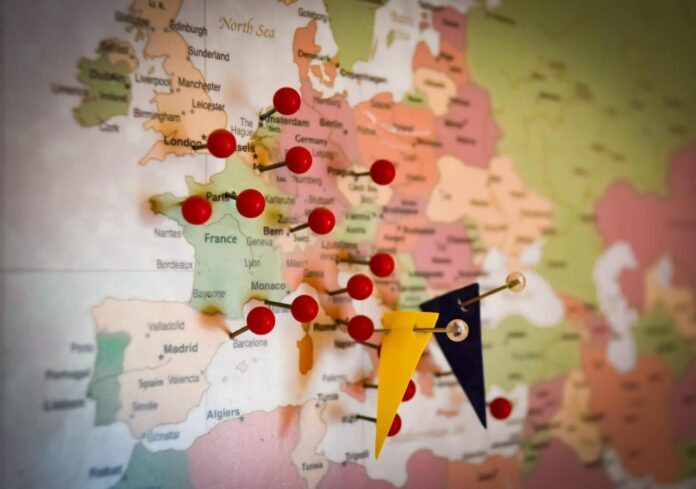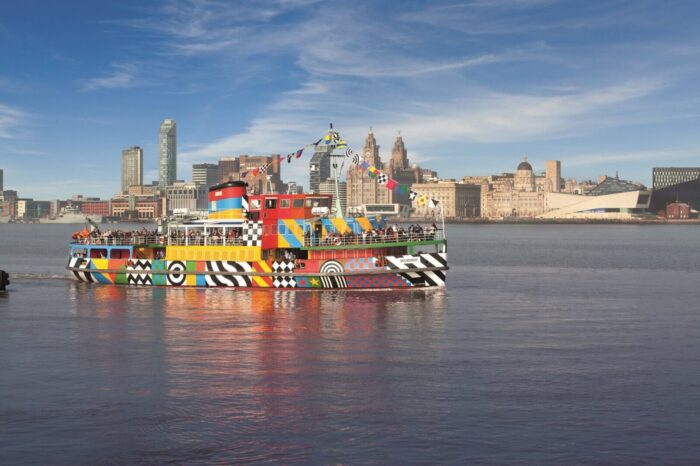
Brimming with diverse cultures, historical gems, mouth-watering cuisines, and stunning landscapes, Europe is an adventurer’s paradise. With countless opportunities for exploration and excitement, an adventure is a journey that begs to be experienced. While the destinations themselves captivate travellers, the journey between these nations is a great European adventure.
Europe’s web of transportation offers an array of experiences, each unique, efficient, and catered to your travel style. From soaring through the skies to coursing along rails, cruising waterways, or hopping on a bus, Europe presents a platter of travel options.
Unravel the charm of these modes of transport as we delve into the best ways to travel between countries in Europe, turning your travel time into an experience to savour.
The European Bus Network

Navigating Europe by bus is an incredibly cost-effective and versatile option that suits many travellers’ needs. Several bus companies have transformed long-distance bus travel, making it a comfortable and reliable alternative for cross-country journeys.
The extensive bus routes that traverse the continent offer a real opportunity to explore off-the-beaten-track locations as well as the major cities. For instance, you could hop on a bus from Lisbon to Madrid or journey from Berlin to Prague, all while appreciating the changing landscapes from your window seat.
The cost of bus tickets can be remarkably lower than those of trains or flights, particularly when booked in advance. Plus, many of these buses offer amenities such as free Wi-Fi, power outlets, ample legroom, and even onboard restrooms, ensuring a comfortable journey.
Another advantage of the bus network is its accessibility. Bus stations are typically centrally located within cities and towns, making them easy to reach and reducing the need for expensive taxi rides or complicated public transportation links.
The European Rail System
A timeless classic, the European rail system is one of the most efficient and extensive networks globally, offering passengers unparalleled connectivity between countries. Known for their punctuality and frequency, trains crisscross the continent, making city-hopping an effortless endeavour.
The high-speed rail lines that connect the UK to mainland Europe offer comfort, speed, and breath-taking views of the countryside. With these trains reaching speeds of up to 320km/h, they often rival the efficiency of air travel for inter-country commutes. For example, the Eurostar can whisk you from London to Paris in a little over two hours, while the TGV can take you from Paris to Barcelona in approximately six and a half hours.
Moreover, overnight train services offer a unique experience for travellers. An excellent example is the BB Night Jet, which provides routes such as Munich to Rome or Zurich to Berlin, allowing you to travel vast distances while you sleep and wake up ready to explore your next destination. Travelling by train is not just about getting from point A to point B; it’s a chance to slow down, savour the journey, and perhaps even get a taste of the local culture.
For those planning extensive travel, consider the Interrail (for European residents) or Eurail (for non-European residents) pass. These offer unlimited travel across 33 countries, bringing Europe to your doorstep.
Air Travel

The boom in budget airlines over the last few years has made air travel a viable and often economical option for moving between European countries. Many carriers offer flights to an extensive list of destinations at prices that can even rival the cost of train or bus tickets. This affordability makes flying a practical choice for covering large distances in a short time.
There’s more to the budget airline story than just the price tag. The frequency of flights, the ability to book last-minute, and the short flight durations make air travel an appealing option. For instance, a flight from Madrid to Berlin can take as little as three hours, a significant time saving compared to other modes of transportation.
However, travellers should be aware of the potential drawbacks. These budget airlines often use secondary airports located outside city centres, which could add to travel time and costs. Additionally, low-cost carriers are notorious for charging extra fees for luggage, seat selection, and even boarding passes. Therefore, it’s crucial to factor in these additional costs and time considerations when comparing airfare to other means of transport. If you’ve experienced flight cancellations or disruptions, don’t forget to fight for your cancelled flight compensation to ensure you are rightfully compensated for any inconvenience caused.
Car Rentals and Rideshares
For ultimate freedom and flexibility, renting a car might be the way to go. Europe has a well-maintained network of highways and scenic routes, making road trips an enticing option for many travellers. Whether you wish to drive along the stunning Amalfi Coast in Italy, meander through the French vineyards, or explore the rugged landscapes of the Scottish Highlands, a car gives you the flexibility to travel at your own pace.
Moreover, many rental companies offer the option of picking up a car in one country and dropping it off in another. This flexibility means you can start your road trip in Amsterdam and end it in Rome without worrying about returning the vehicle to its original location.
On the other hand, if you’re looking for a more sustainable and social way of travelling, ridesharing platforms connect drivers with empty seats with passengers going the same way. This shared economy approach to travel is not only cost-effective but also a great way to meet locals and fellow travellers.
Ferries and River Cruises

Europe’s intricate network of rivers, seas, and canals offers an alternative means of cross-country travel: by water. This mode of transportation, often overlooked, provides a tranquil journey while offering a different perspective on the landscape and cities.
Ferry services, such as those in the Nordic countries or the Mediterranean, can be an ideal way to travel, particularly for those visiting islands like the Greek Isles or the archipelagos of Sweden and Finland. These services offer a variety of options, from simple passenger boats to larger vessels that can accommodate vehicles and provide overnight accommodations. For example, a ferry journey from Copenhagen, Denmark, to Oslo, Norway, allows you to savour the beauty of the Scandinavian coastline while travelling comfortably.
Alternatively, river cruises are gaining popularity as a luxurious and leisurely way to traverse the continent. Ships sail down iconic rivers like the Rhine, the Danube, or the Seine, weaving their way through multiple countries and offering a vantage point to Europe’s heartland unattainable by any other means of transport. These cruises often include guided excursions to historic towns and cities en route, providing an immersive travel experience.
Making Europe Your Oyster
The variety of transport options in Europe caters to the unique tastes and preferences of every traveller, making inter-country travel a part of the quintessential European experience. Each mode of travel offers its own set of benefits and trade-offs, be it in terms of speed, cost, convenience, or the chance to enjoy Europe’s landscapes.
Choosing the best way to travel between countries in Europe ultimately comes down to aligning your transport choice with your travel style and priorities. Whether you prefer the affordability of buses, the speed and efficiency of trains, the economic savings of budget airlines, the freedom of a car, or the serenity of water travel, Europe’s well-developed transport network has you covered.
















